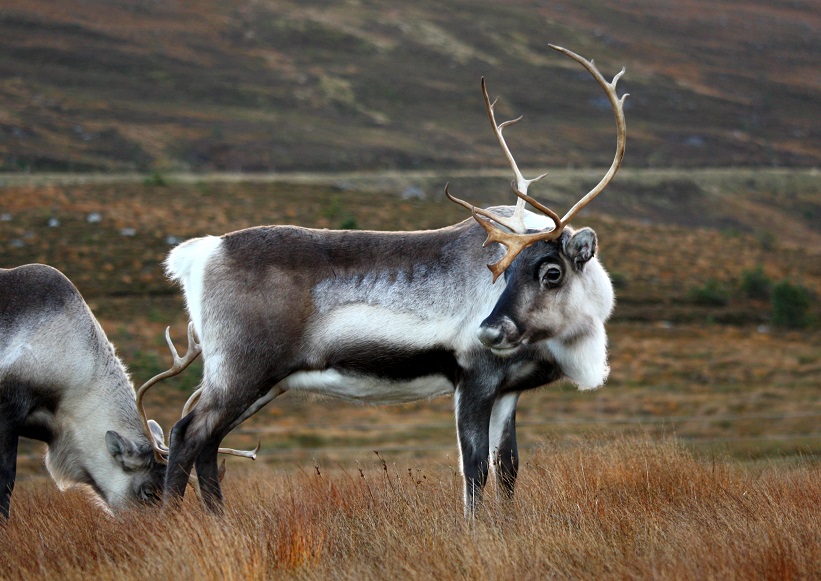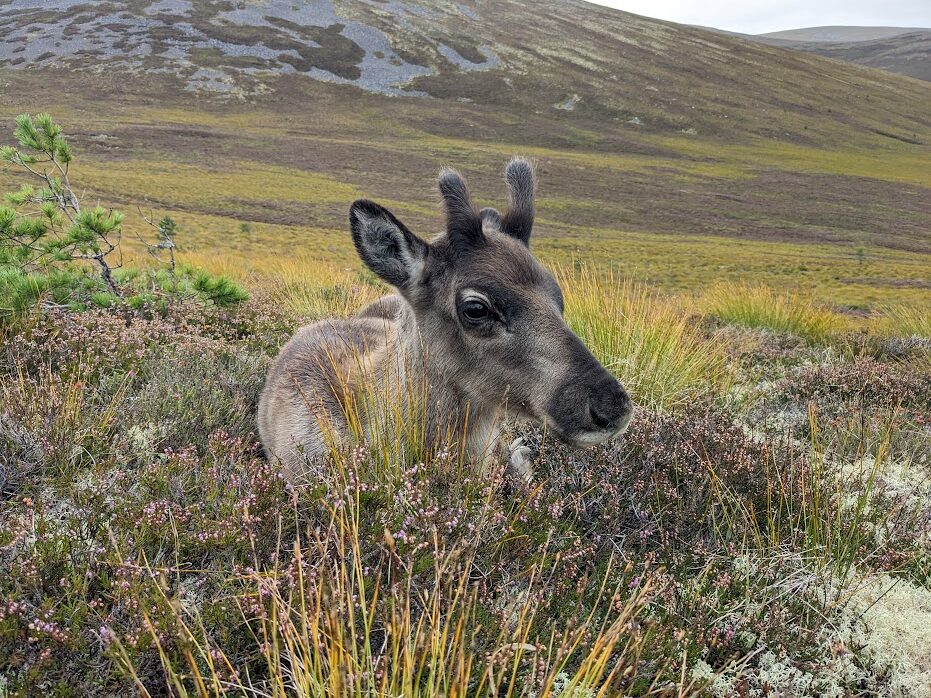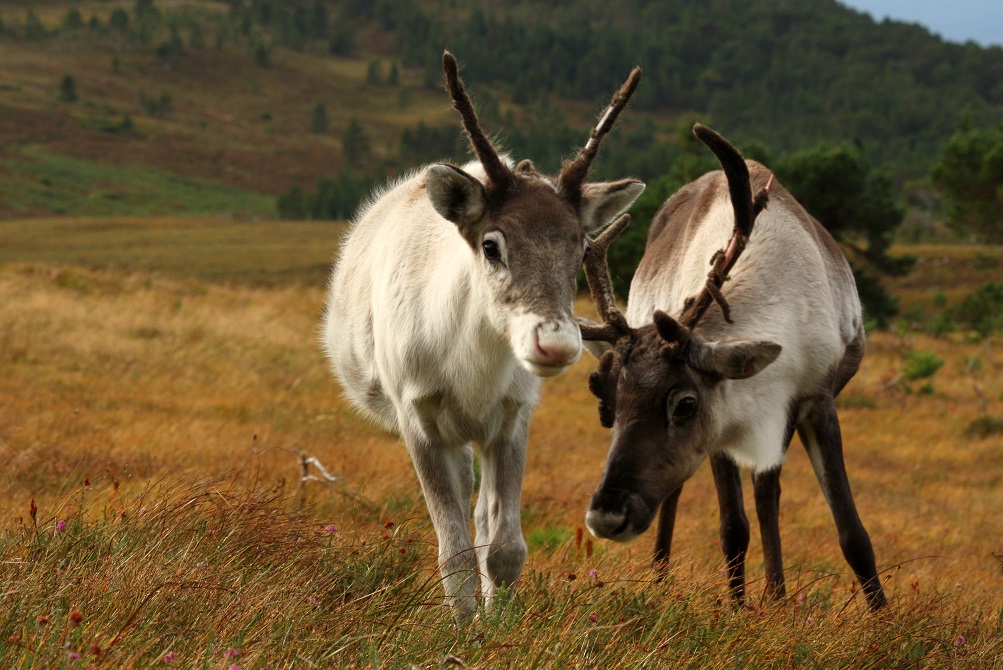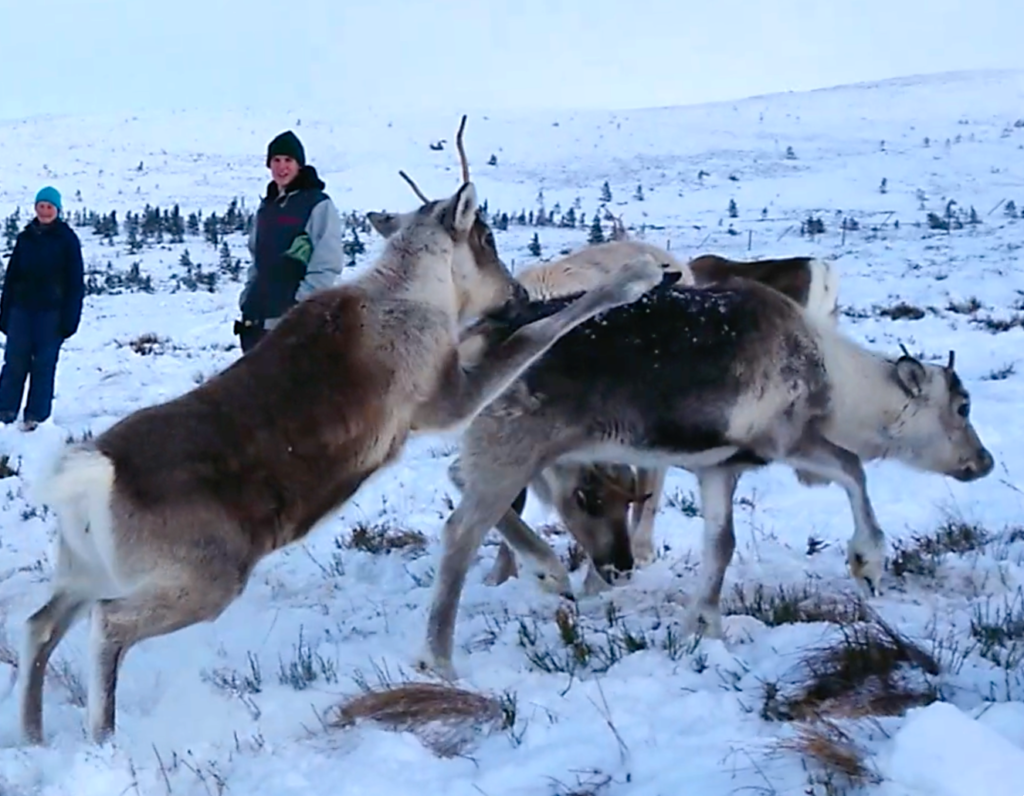A few years ago, Andi started a series of blogs titled Dynasties after watching the David Attenborough series with the same title. These highlighted matriarchs within the herd, in particular some of our most successful breeders. I thought I would continue this theme and in this blog I will write about Spy. I have only know Spy as an adult reindeer, and she has always been notorious for being a feisty girl, in fact you can read an entire blog about why we are all a little afraid of Spy, written a couple of years ago by Hen: Spy – the reindeer we’re all a bit scared of – The Cairngorm Reindeer Herd.


Whilst she is fairly wild most of the time, she becomes particularly terrifying when she has a newborn calf. Most of the reindeer, particularly the older mums are quite happy for us to be nearby their calves, knowing we won’t cause them any harm. Spy however will absolutely not let you anywhere near any of her calves, if you read through Hen’s blog linked above it will tell you all about the different tactics required at calving time. Whilst we curse Spy lots of the time, her fierce protection of her offspring makes her a fantastic mother and she has raised now 4 strong female calves; Morven, Dante, Florence and Sundae. In fact, all 11 of Spy’s surviving descendants are female, guaranteeing the continuation of her genetics.

Morven was born in 2015 and was named in the ‘Scottish hill races’ theme. Morven has always been a fairly independent reindeer, like her mother. She’s definitely tamer but you still wouldn’t always guarantee being able to catch her out on the free-range. She’s one of the strongest and healthiest reindeer in our herd and herself has now had two daughters of her own, Pinto and Mochi.


Pinto was born in 2020 and despite being one of our Covid calves, is tamer than her mother yet again. It seems as though with each generation, Spy is diluted a little. Pinto has now had her first calf, the incredibly sweet Orinoco who was born last year. Orinoco is very sweet and tame, but not pushy at all, making her a favourite amongst herders. Mochi is also a real sweetie, she is now almost two years old but due to being one of the smallest of her year is often mistaken for a calf, which sometimes results in her getting preferential feeding along with the calves which she’s certainly not complaining about.



Dante was born in 2017 and is without a doubt one of the prettiest members of our herd. She also grows an impressive set of antlers each year, even whilst rearing a calf at the same time. Dante whilst also shy in nature, through years of bribery is now reliable to catch and a lovely reindeer to work with. She herself has now had three daughters, Mangetout, Glacée and Amazon.


Mangetout is now fully grown and mother herself, but I couldn’t resist this photo of her as a newborn calf! Mangetout is also tame enough to reliably catch, but occasionally granny Spy shines through as she shows us her beautiful (and pointy) antlers! Mangetout had her own calf this year who we have named Darling. There was some controversy over whether we would name a calf Darling, after the river in Australia. Some of the herders thinking it was a bit too ‘cute’. In the end we thought if we gave is to Mangetout’s calf (Spy’s great-granddaughter) she would almost certainly turn out to be the opposite! So far she has proved us wrong and is generally a lovely reindeer, although can be a bit of a menace if you try to stand between her and a bag of feed.



Dante’s middle daughter Glacée is now almost two and like her big sister, was also given a French name, the word for ice cream. Glacée is very recognisable as she’s got a big white tuft of hair between her antlers! Amazon, her younger sister, is without a doubt the most impressive calf born last year. Her antlers are absolutely huge, with elaborate splits in them and she’s just as tall as many of the yearlings.


Florence is the next down in Spy’s daughters. She was born in 2019 as is named after the Italian city. I would say she is tamer yet again than either of her sisters, she is the spit of her mother in looks but temperament wise is much calmer. Florence has calved just once, and very sadly he didn’t survive his first summer. Florence is almost 5 so I have no doubt she will have many more breeding years in the herd and will go on to produce just as many wonderful reindeer as either of her sisters.


Sundae is the youngest and last of Spy’s daughters. She was born in 2022 and named after an ice cream Sundae. Sundae has got a white nose, which she gets from her dad, Spartan. The rest of her features, including the big white rings around her eyes and her large slightly floppy ears, are all Spy! Sundae is now almost two years old and has lost her antlers a bit earlier than some of the others so currently spends feeding time doing her very best calf impression to sneak into the ‘calf only’ green feed sacs. Who can blame her though!


Spy will be thirteen this year so whilst her breeding days are now behind her (cue huge sigh of relief from all the reindeer herders involved in calving season), her legacy will be continued by all her offspring. She currently has 4 daughters, 5 grand-daughters and 2 great-granddaughters, all of whom are either at breeding age or will be in the next couple of years. There is definitely no fear of the Spy line dying out in our herd, but diluting her ‘Spyness’ a little with each generation, is definitely no bad thing!

Lotti










